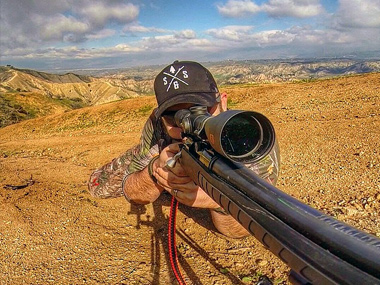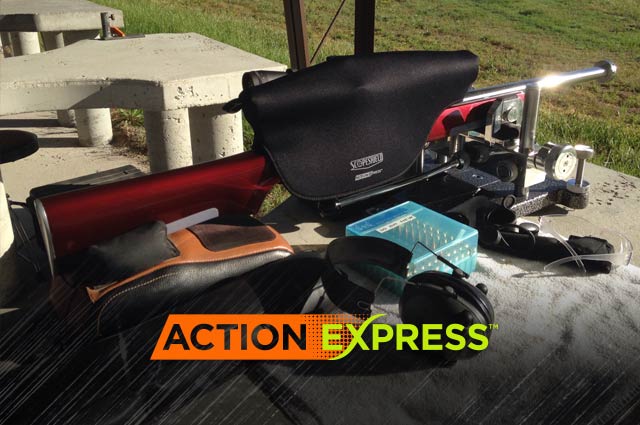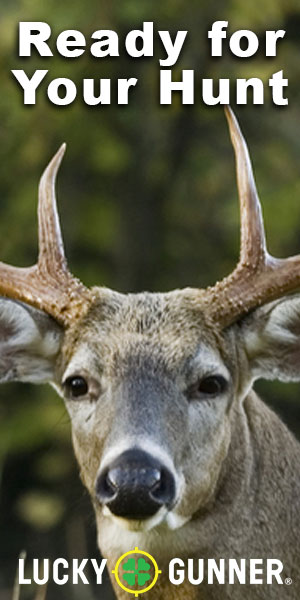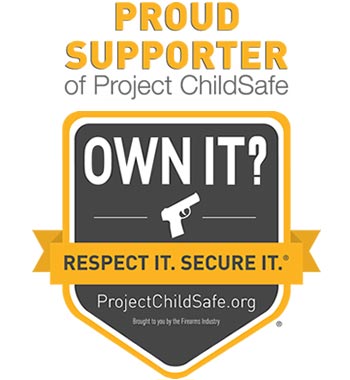I cannot tell you how many times I have headed out into the field with a friend, new hunter or family member and I hear, “I really wish I could have spent more time practicing shooting first, before the hunt.”
This sentence drives me crazy. You are telling me that you have not spent any time at the range shooting your rifle, smacking clays with your shotgun or nocking an arrow before you came out to hunt?! If you are a professional football player getting ready to play in the Super Bowl, you are not sitting on your couch the day before the big game, eating chips. You are out practicing your position, honing your skills in your specific area. If you are the quarterback you are probably throwing hundreds of footballs nonstop.
Think of every hunting trip as your Super Bowl. This is your game day – become the master of your position by putting in the time and perfecting your aim with these tips:
3 Important Tips for Practicing Your Aim – Tip One
Know your gear, and how it works.
The other day, I was at the range putting in time for my late season deer hunt, which is still two months away. While I was there, I watched a young gentlemen pull up in his raised truck with his deer skull sticker proudly displayed on the rear window. He pulled out a brand new, unopened box with a bow from the back of his truck. He then grabbed arrows and headed to the 45 yard target. He opened the box, pulled out his bow and grabbed an arrow.
He nocked an arrow, pulled back and let it fly… Smack! 12 inches left of bullseye.
He nocked arrow 2, pulled back and let it fly… Smack! 10 inches too high.
Arrow 3, pulled back and let it fly… Whoosh. Missed the target.
He stood there cussing at his bow, his brand new, $1,000 bow “Darn you bow, I paid 1,000 bucks for you to hit bulls-eyes, you dumb bow!”
Don’t worry. I cleaned it up for you; the real words he shouted, I would not repeat myself. I set my bow down and walked over. I asked him what the problem was, to which he replied, “I just got this new bow and it sucks, it will not hit center, plus I have my deer tag I need to fill.”
I asked him if he had ever shot a bow before today, he said he had shot at camps as a kid and this was his first compound bow. I started to explain the bow from cams, sights, stabilizers etc. I showed how to sight in his pins and explained how everything worked. I then sighted it in for him.
I grabbed an arrow, nocked it and flung one down range… Smack! 1 inch off bullseye.
Why Did I Tell You This?
Because many times, we get new gear and expect it to be perfect. This young man had all the “stuff”, but did not have the skills it took to use it. He thought he could shoot three arrows at the range and be ready to hunt deer in the mountains.
Many of us tend to do this with our weapons. Sometimes we think we can go out and hunt dove with a brand new shotgun. Why do we think we can hunt long range plains animals with new ammo and a new scope without ever taking a shot?
This happens all the time. I had a friend who purchased a new rifle scope. He mounted it on his old trusty rifle. He then put the rifle in its case and put it back in his closet. When hunting season came around ,he pulled out his rifle, threw it in the truck and headed out. He told me that he was missing easy 75-yard shots by 2-3 feet. He didn’t know why he was missing, until he stopped himself and said, “I never sighted in my new scope.” It had hit him. He made a huge mistake and spent hundreds of dollars on a trip, only to come home with no meat.
Take the extra time to get to know your weapon, practice until it becomes part of you.
3 Important Tips for Practicing Your Aim – Tip Two
Know your range.
On my bow, my pins are set at 20 yards, 40 yards and 60 yards. I have them set like this so I know that I can shoot comfortably from 20-60 yards. I know that if I have a 30 yard shot, I aim between my 20 and 40 yard pins and will be on target. I practice at every range from 20-25-30-35-40-45-50-55 and 60. Many people think it’s overkill when I am at the range and I move every 10 shots to a different yardage. But for me, it’s building my muscle memory and sharpening my brain to recognize targets at different ranges.
By knowing where you are hunting, you can determine how you prepare your range time. If you are going to be hunting large game with a rifle in the Midwest, you will probably be shooting anywhere between 200-600 yards. When you put in range time, don’t spend too much time on the 75-100 yard ranges, but rather push yourself to shoot the 250+ ranges. Get comfortable taking 2-3 shots without lifting your head off your stock. Sometimes that animal might still be alive, and being ethical hunters, we might need to take that second shot quickly. Practice making that quick second shot so that animal will not suffer and you are not walking miles tracking a wounded animal.
A Helpful Hint
One helpful tool for bow hunters is 3D archery ranges. These ranges offer the most realistic real world scenarios, verses just shooting targets at the range. With 3D ranges, you walk from station to station, aiming at different targets within multiple yards. Like skeet shooting, 3D Ranges also provide you with different shooting positions. They are helpful because you are shooting at realistic animal targets.
This helps you with being able to judge distances; being able to see what a deer looks like at 40 yards, and just how small your target is. It is one thing to look at a red, blue, yellow and white target, but to shoot a life-size elk standing in the trees gets your heart pounding. Another bonus from practicing on 3D ranges is the walking. It gets your heart rate up, and gets the blood flowing, just like spot and stalking real game. If you have never been to a 3D range, I would highly recommended it.
3 Important Tips for Practicing Your Aim – Tip Three
Know your arrows and ammo.
One major problem I see with new and seasoned hunters is not practicing with the same arrows or ammo that they hunt with. I had a friend who used different arrows with different weighted tips with his practice than what he used for hunting. When he would go out and hunt, he would always be off target because he had sighted in with a certain weight. Now, he was using something that weighed more and flew different.
You may be wondering why this matters. Think of it this way: I set a cup up 20 feet in front of you, give you 30 ping pong balls, and tell you to practice making as many as you can into the cup. I give you three hours to practice. You learn the weight, the feel and how they fly. Then I come back after the three hours, and say, “Can you make it in that cup for 100 dollars on the first try?” You tell me “Yes, I’ve learned how they fly, I’ve been practicing so hard. It will be simple”.
Then, I hand you a golf ball. You would look at me like I was crazy. You would be upset at me; upset that I just made you spend three hours practicing with one ball, then I hand you a different type, and want you to copy the results.
This also applies when you are practicing with your weapons. Find out what your broadhead weighs and buy a field tip that weighs the same. This will help with constancy. You will be used to shooting the same weight; you will know how your bow shoots it, how it flies, where and how it hits.
The same rule applies to ammo with rifles and shotguns.
Variety Matters
Many bird hunters don’t practice with different size shot in their shotguns. If you are shooting skeet with a number 8 shot, then heading out to shoot ducks, knowing your spread pattern at different distances will help you to identify accurate shots. It will help you better judge next time you are sitting in your blind and those ducks come flying in. You will remember back to that pattern and know if it is a shot that’s worth taking. Seeing how your pattern looks at 20 yards vs. 40 yards is eye opening.
Practicing with the ammo you will be using applies to rifle hunting as well. If you are shooting 165gr 30-06 rounds while on your hunting trip, but practice with 180gr rounds, you will see a 1-2 inch difference, as well as a recoil difference. One to two inches may not seem like a big deal, but shooting an antelope at 450 yards with cross winds will make those inches become feet.
So practice with what you plan on using. You will make better and more accurate shots in the field and on the range.
Get out there, grab your weapon and put in the time. Don’t waste your time in the field by not striving for perfect practice at the range. Here is a great quote from the football legend Vince Lombardi that I feel sums it all up perfectly:
Practice does not make perfection. Only perfect practice makes perfection
-Vince Lombardi
Jeremiah Doughty
From Field To Plate




